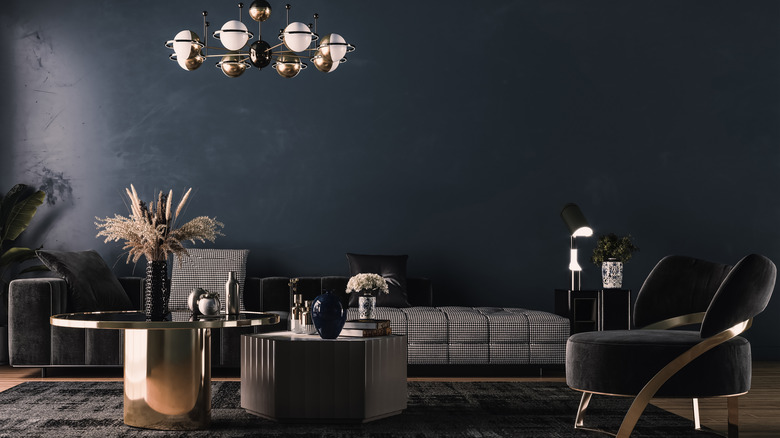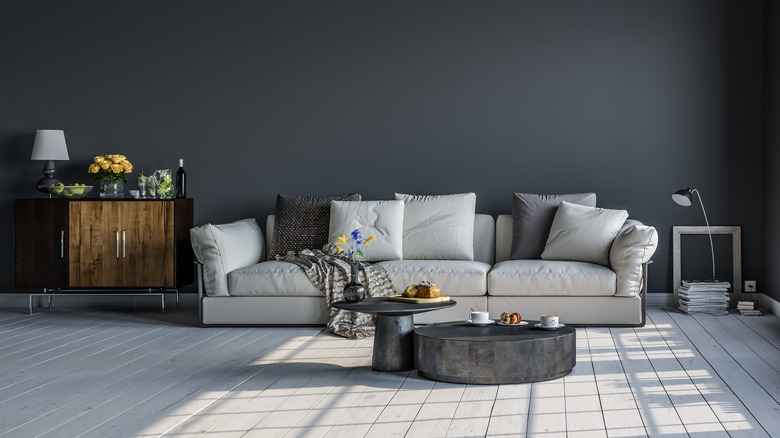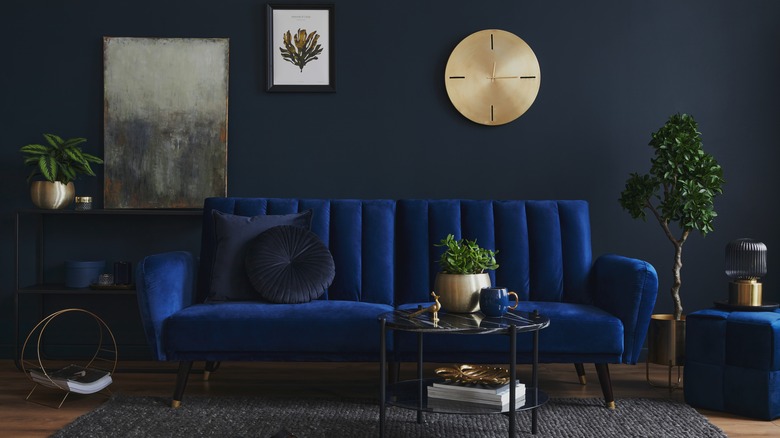Mistakes To Avoid When Designing A Moody Room (And What You Should Do Instead)
Over the past few years, the reigning color scheme for chic interiors has been white on white or gray on gray. More recently, though, the needle has been moving from that monotone effect to one that introduces more color, and importantly, more contrast. But don't equate moody with black, because you don't have to use black to create the introspective look you want. We've talked about color trends for 2024, which include a lot of deep colors including black or charcoal gray, but also emerald and navy.
You can introduce these darker colors to your interior in several ways. Decorate with these tones by painting the walls or possibly just one accent wall with a dark, intense hue. Alternatively, bring in a large piece of furniture such as a cabinet, sofa, or a dining room set to anchor the room with color. What you don't want to do, designers warn, is to have nothing but dark furniture in a dark room with dim, inadequate lighting. A scheme like this with nothing to alleviate the gloom will just be depressing, as well as looking flat and boring.
Lighting matters
To keep your moody room from slipping over the edge from stylish to just plain muddy, pay special attention to your lighting. Direct light from any source, natural light, or overhead lighting, will reflect more harshly and with more glare in a dark room compared to a room with neutral colors. Instead, keep lighting indirect, soft, and warm. Recessed lighting you can direct works well, as do dimmers on your main lights. In general, consider adding lamps and wall sconces to fill the room with an ambient glow.
Additionally, think about how you're going to use this room. Is it a retreat, an office, a sitting room, or a bedroom? The lighting you install has to be up to the task you assign to the interior. Given that, consider mixing your light sources. If this is primarily a sitting room, be sure the main area, the chairs, sofa, and small tables are well lit, and add accent lights so the main lighting isn't like a spotlight, super bright in an otherwise dim room. Wall sconces and other small lamps can offset the main light to create romantic shadows but alleviate gloomy, unlit corners. Putting the lights on different switches to illuminate various areas will give you flexibility and increase ways to use the room.
Contrast and accents
Once you've opted for dark walls or furniture in your moody room, don't add dark lamps, dark carpet, and dark accessories. Opt for contrast instead. If the walls are painted a smoky color, consider a lighter-colored rug or flooring. If the sofa is big and dark, add lighter-colored pillows or a throw blanket, or place chairs in a complementary but lighter shade to give the interior some texture, and also to keep the entire room from looking gloomy. Another way to offset the visual weight of darker walls or accents to your room is by incorporating a little bit of shine. Think about adding metallic or glass pieces from mirrors to brass lamps, or pillows or art that have a touch of gold.
We've offered advice on creating your own moody room following suggestions from leading designers like Emily Henderson. Using such tones can create your own personal oasis, a unique and comforting space. This decorating style with rich dark colors has been dubbed "moody," although some would rather describe it as dramatic or evocative.


